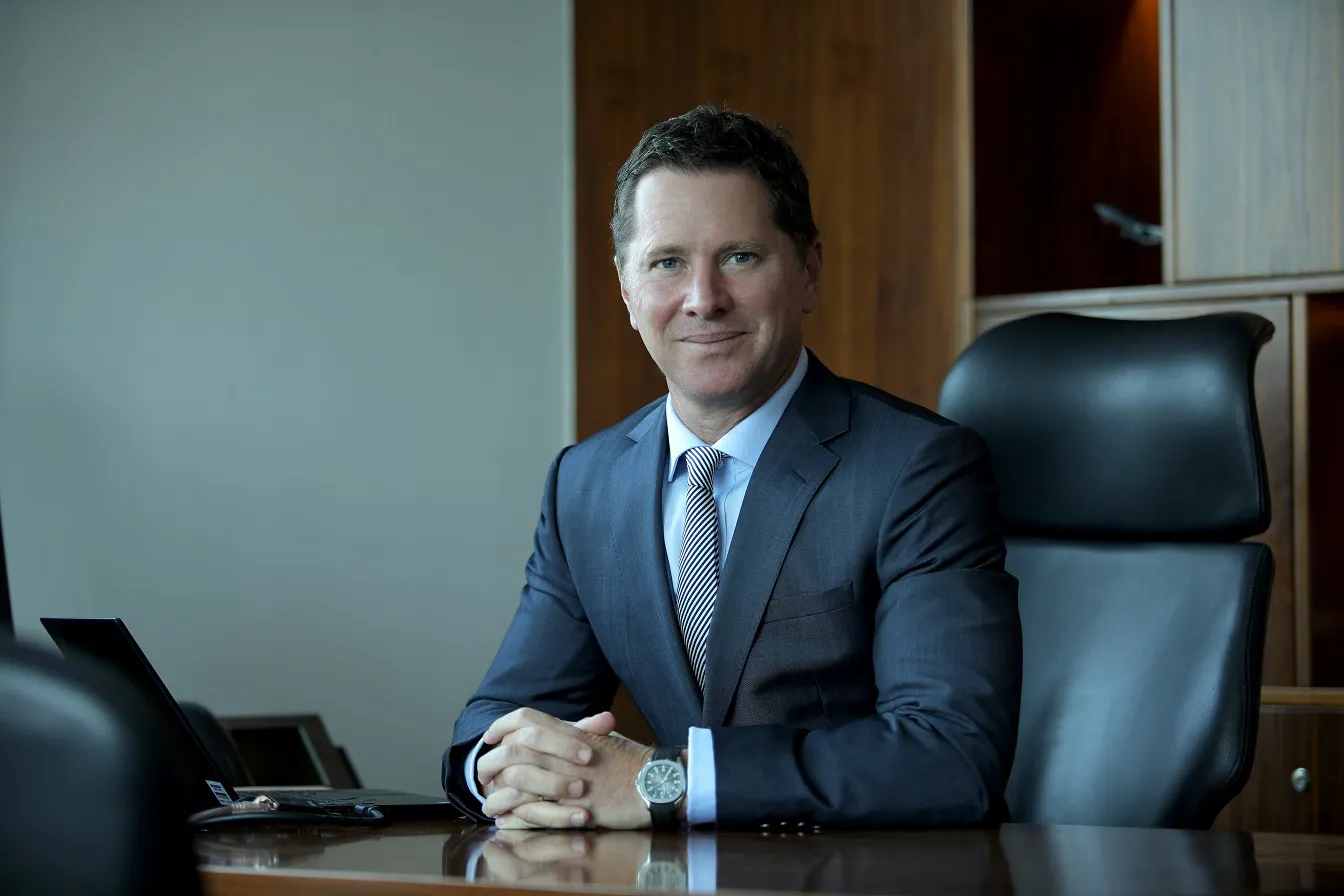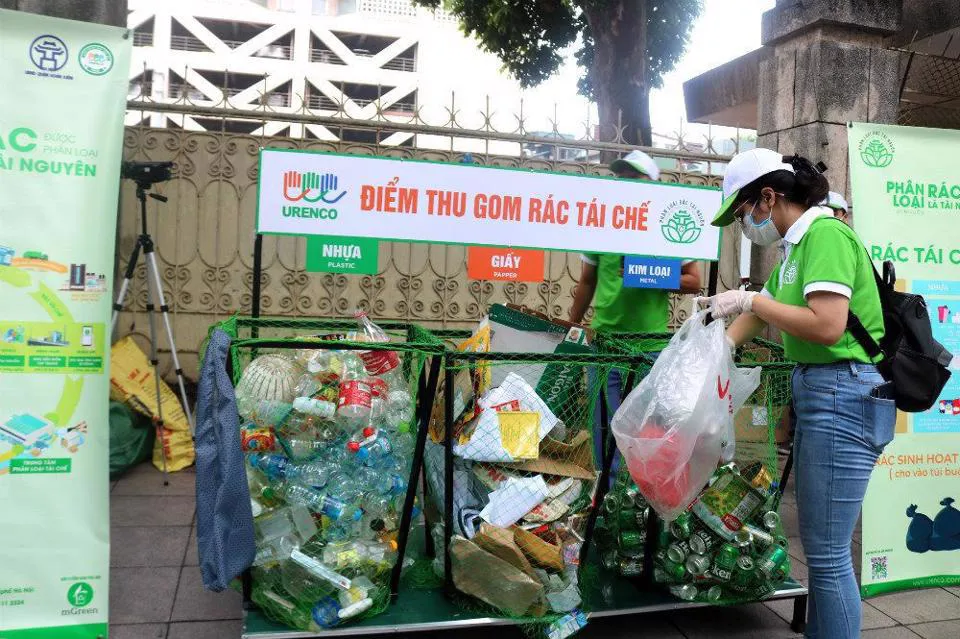From waste to wealth: What opportunities abound in a circular economy?
As environmental concerns rise and resources deplete we need to shift towards a new model of consumption that can support the economy and help the planet: the circular economy.
Earth Overshoot Day is a concept developed by Andrew Simms of UK think tank New Economics Foundation and promoted by its partner organization Global Footprint Network.
It marks the date when humanity has used all the biological resources that the Earth regenerates during the entire year.
| CEO of HSBC Vietnam Tim Evans. |
This year, Earth Overshoot Day fell on 28th July, which means on this day, we had used all of the world’s natural resources budget for 2022. The date is coming earlier and earlier each year. In 1970, we overshot this threshold 2 days before the year-end. This year, we overshot the threshold 156 days before the year-end.
The truth is we consume a lot and waste a lot. Think about the resources you consumed in the past week: the clothes you bought, the food you ate, the distance you traveled. Think about everything you threw away: single-use plastic items like bags, bottles, coffee cups, straws, boxes, spoons, etc.
Not only this but the extraction, processing, and manufacture of goods for society accounts for a staggering 62% of total global greenhouse gas emissions. Excess emissions are released from inefficient use of resources and waste, contributing to an estimated 1.6 billion tonnes of carbon emissions generated from solid waste management alone, which is the equivalent of having 350 million cars on the road. It also generates significant amounts of waste and pollution. Currently, 60% of discarded materials are either sent to landfills or incinerated, thereby damaging the natural environment. This is even more alarming as global waste generation is set to increase by 70% by 2050, according to the World Bank.
Do we need to extract from the natural environment at the rate that we currently do? Can net zero emissions be achieved without net zero waste? The answer is no. So what can we do?
A switch to a circular economy
There are many definitions available of what the circular economy is. In HSBC’s view, the circular economy is an alternative economic model to the linear model which consists of - manufacture, use, and disposal. It promotes sustainable development by designing products, systems, and processes that focus on recycling and reuse, thereby ultimately minimizing waste, conserving natural resources, and providing efficiency gains.
The concept of circularity is that we move from a world where we make-consume-dispose to one where there is less leakage, where waste can be fed back into the system as raw materials, where products and systems are designed to be easier to recycle, and where we use much more than just consuming and dispose of. Transitioning to a circular economic model can help preserve scarce resources, protect our environment, unlock sustainable economic development potential, and improve our quality of life.
Under the current linear model, natural resources are under strain. Over the coming decade, millions more people all over the world are expected to become ‘middle-class’ consumers, pushing global consumption ever higher. Given the finite resources we have at our disposal, a new model for economic prosperity is becoming even more necessary. Today’s linear world is unsustainable when the number of resources extracted from our planet is rising by nearly 2% per year.
A linear economy follows the “take-make-dispose” approach - raw materials are collected, then transformed into products that are used until they are finally discarded as waste. If left unchecked, the linear economy will produce as many products as possible, damaging the environment in the process due to unrestrained resource extraction, excessive carbon emission, unwanted pollution, and excessive waste.
Unlike the linear economy, the circular economy requires a paradigm shift, to one where resources are reused for as long as possible, by optimizing the re-utilization of consumer goods and active recycling of unwanted materials.
The circular economy can help us save energy and resources. It also brings economic benefits and quite substantial ones too. The move towards a more circular economy can contribute $4.5 trillion in additional economic output by 2030, and $25 trillion by 2050, as a result of resources being better utilized and more jobs being created in higher-skilled industries away from resource extraction and waste disposal. According to ILO projections, “under the circular economy scenario, worldwide employment would grow by 0.1% by 2030 in comparison with a business-as-usual scenario”. Employment would grow in the services and waste management sectors by roughly 50 million and 45 million jobs respectively. The World Economic Forum estimates that by 2025, recycling, reusing, and remanufacturing could help unlock $1 trillion a year in wasted resources and reduce 100 million tonnes of waste globally.
Despite this, the world is still only 9% circular. There is a huge amount still to be done to transition a notable share of the world away from a linear model. There are two requirements to “close the loop” involving sustainable resource management and waste management. This is where plenty of opportunities can be found, from technology companies developing new materials, products, or processes to a closed-loop model, to companies committed to transitioning to the sustainable circular approach. Opportunities abound for both businesses and investors.
| Collecting waste for recycling at Hoan Kiem District. File photo |
1. Rethinking supply chain management
The supply chains should be rethought positively. Taking production, use, and disposal of mobile phones as an example: based on 2010 Eurostat figures, 85% of mobile phones produced are sent to landfill after use, 6% are reused and 9% are recycled. No phones were remanufactured. As mobile phone usage continues to increase across the world, increasing how many handsets are reused and recycled will be important.
If 21% of mobile phones could be remanufactured by improving collection/encouraging consumers to hand in discarded phones when purchasing new ones, these old mobiles could be re-injected back into the supply chain at the “product manufacture” stage. Any still functioning parts could be extracted and put into new products. In this case, the number of mobile phones ended up in landfills is estimated to fall to 50%. While giant phone producers are considering this idea of shifting their supply chains towards a more circular one, IKEA, the Swedish furniture seller, has already made it happen by starting trials for leasing furniture and refurbishing to sell to prolong the lifecycle of the products since 2019.
2. Redesigning products
To transition to a circular model, initial products will need to be long-lasting and of higher quality, and designed in a manner that facilitates reuse or recycling. Let’s look at one of the most widely used items in the world: drinks bottles. Currently, vast amounts of plastic packaging are used for drink bottles.
Using more recycled material is one way to solve plastic pollution. Other solutions include refillable packaging designs and this has gone beyond drinks bottles. The idea can also be feasible in a wide range of food products with consumers bringing their containers to refill rice, cereals, etc. UK food retailer Waitrose has started a trial for the use of refillable in supermarkets. This new scheme significantly reduces packaging waste, and economically benefits the consumers as most of the refillable products will be sold for a lower price given a lack of packaging costs (up to 15% discount).
3. Reclying
The easy option is typically the route that will be taken, even if this is environmentally damaging. With that in mind, the easier companies make it for consumers to recycle (be that by simple processes or through incentives), the more circular we can hope to become. Companies can benefit from this too, extracting valuable parts or raw materials from waste products, and lowering costs.
Take TH Group as an example: in April, they launched a campaign to give away eco-friendly gifts for consumers who bring 20 cleaned and folded milk cartons regardless of kind, brands, or manufacturers to TH true mart stores for recycling. They consider it as giving milk cartons “a new life”.
4. Waste-to-energy
This is the process involving the capture of energy generated through waste incineration, which can be used for fuel and power production. Waste-to-energy takes us one step away from a linear lifecycle and one step closer to a more circular economy, by producing energy from resources that would otherwise have been landfilled.
The World Energy Council cites a 2015 study that found incineration led to approximately 40% lower emissions than sending waste to landfill, which underlines the potential of waste-to-energy to reduce emissions besides its role as an alternative to fossil fuels. Several governments and companies recently announced investments in waste-to-energy processes. Although this approach is still arguable in some parts of the world, it is a useful stepping stone that contributes partly to a fully closed-loop economy model.
What challenges lie ahead?
The road to circularity is not simple and many challenges await. The first one is cost. New processes and technologies require a vast amount of investment. Fortunately, more and more financial organizations acknowledge the urgent need to go circular. For instance, HSBC committed to arranging up to USD12 billion of direct and indirect green financing for Vietnam by 2030. We have supported many of our clients like Vinh Hoan, Dohaco, Leo Paper Products (Vietnam), etc. who are taking circularity seriously.
Secondly, the role of government is vital in encouraging progress to a circular economy. A few countries like the Netherlands are far more advanced in developing policies concerning a circular economy, targeting to be 50% circular by 2030, and 100% by 2050. Many countries like the UK, China, and Denmark, have incorporated circular transition into their national strategies to accelerate the adoption of circularity.
Elsewhere, economies are recognizing that the circular economy could be key to their future growth prospects. This includes Vietnam, where the government has recently approved a scheme to develop the circular economy in the country, setting ambitious targets for the country. By 2025, it aims to reuse, recycle, and treat 85% of plastic waste generated, reduce 50% of the plastic waste in the seas and oceans, and reduce the volume of non-biodegradable plastic bags and disposable plastic products that are used in daily life. The volume of municipal solid waste collected and treated in line with the standards and criteria of circular economy models should reach 50% by 2030, with 100% of urban organic waste and 70% of rural organic waste being recycled.
In truth, the shift to a circular economy requires active participation and cooperation across all economic aspects of both businesses and consumers. We all have a role to play. A simple first step that we can all take is to take concrete steps to waste less and reuse/recycle more.
* Tim Evans is the CEO of HSBC Vietnam












